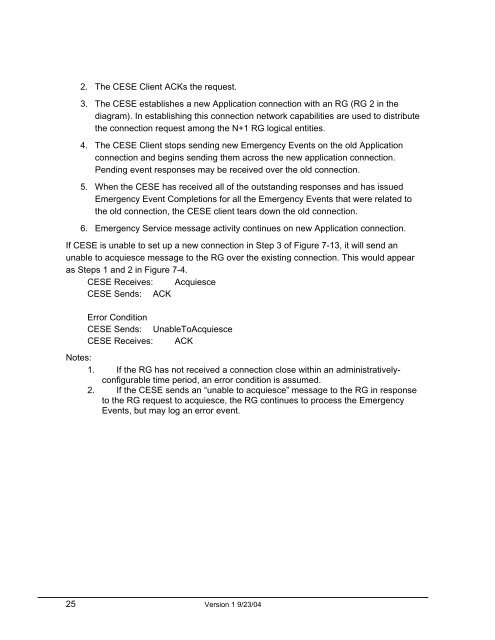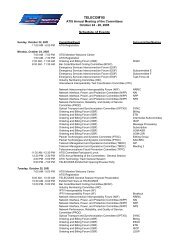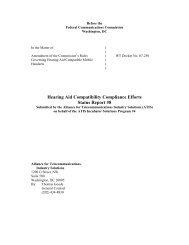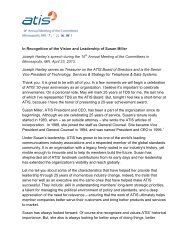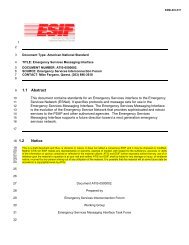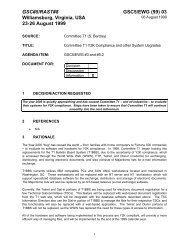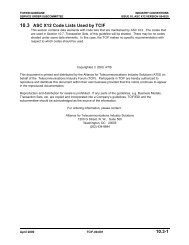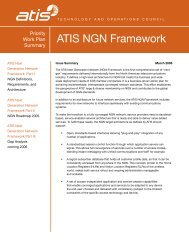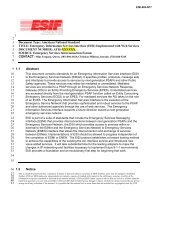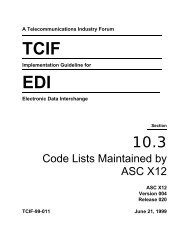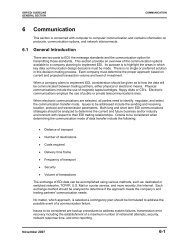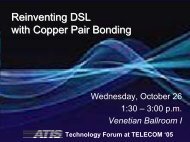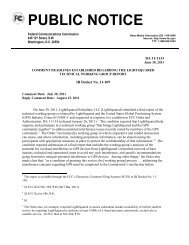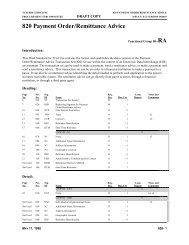Next Generation ESNet Arch Requirements - ATIS
Next Generation ESNet Arch Requirements - ATIS
Next Generation ESNet Arch Requirements - ATIS
- No tags were found...
Create successful ePaper yourself
Turn your PDF publications into a flip-book with our unique Google optimized e-Paper software.
2. The CESE Client ACKs the request.3. The CESE establishes a new Application connection with an RG (RG 2 in thediagram). In establishing this connection network capabilities are used to distributethe connection request among the N+1 RG logical entities.4. The CESE Client stops sending new Emergency Events on the old Applicationconnection and begins sending them across the new application connection.Pending event responses may be received over the old connection.5. When the CESE has received all of the outstanding responses and has issuedEmergency Event Completions for all the Emergency Events that were related tothe old connection, the CESE client tears down the old connection.6. Emergency Service message activity continues on new Application connection.If CESE is unable to set up a new connection in Step 3 of Figure 7-13, it will send anunable to acquiesce message to the RG over the existing connection. This would appearas Steps 1 and 2 in Figure 7-4.CESE Receives: AcquiesceCESE Sends: ACKError ConditionCESE Sends: UnableToAcquiesceCESE Receives: ACKNotes:1. If the RG has not received a connection close within an administrativelyconfigurabletime period, an error condition is assumed.2. If the CESE sends an “unable to acquiesce” message to the RG in responseto the RG request to acquiesce, the RG continues to process the EmergencyEvents, but may log an error event.25 Version 1 9/23/04


